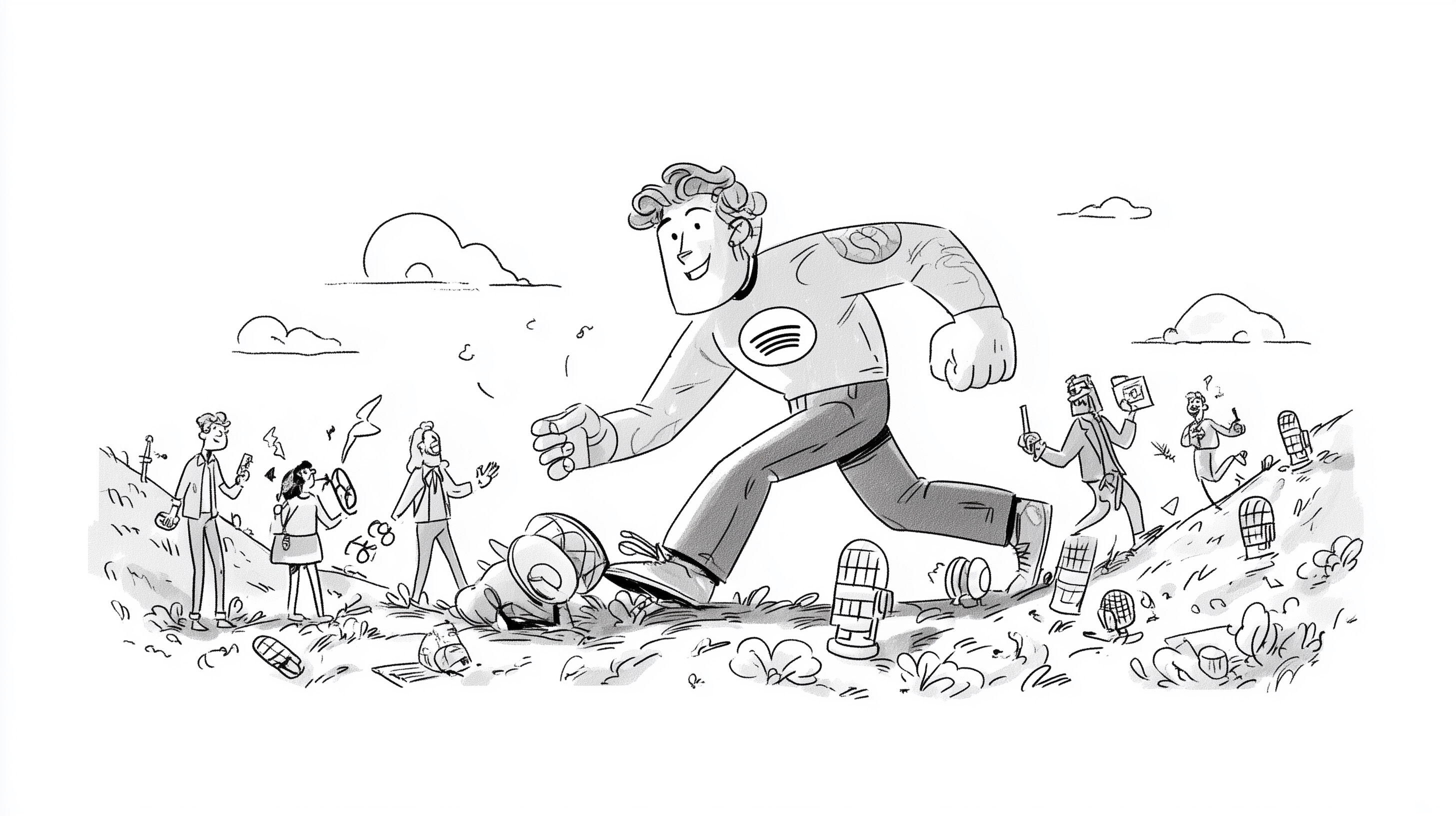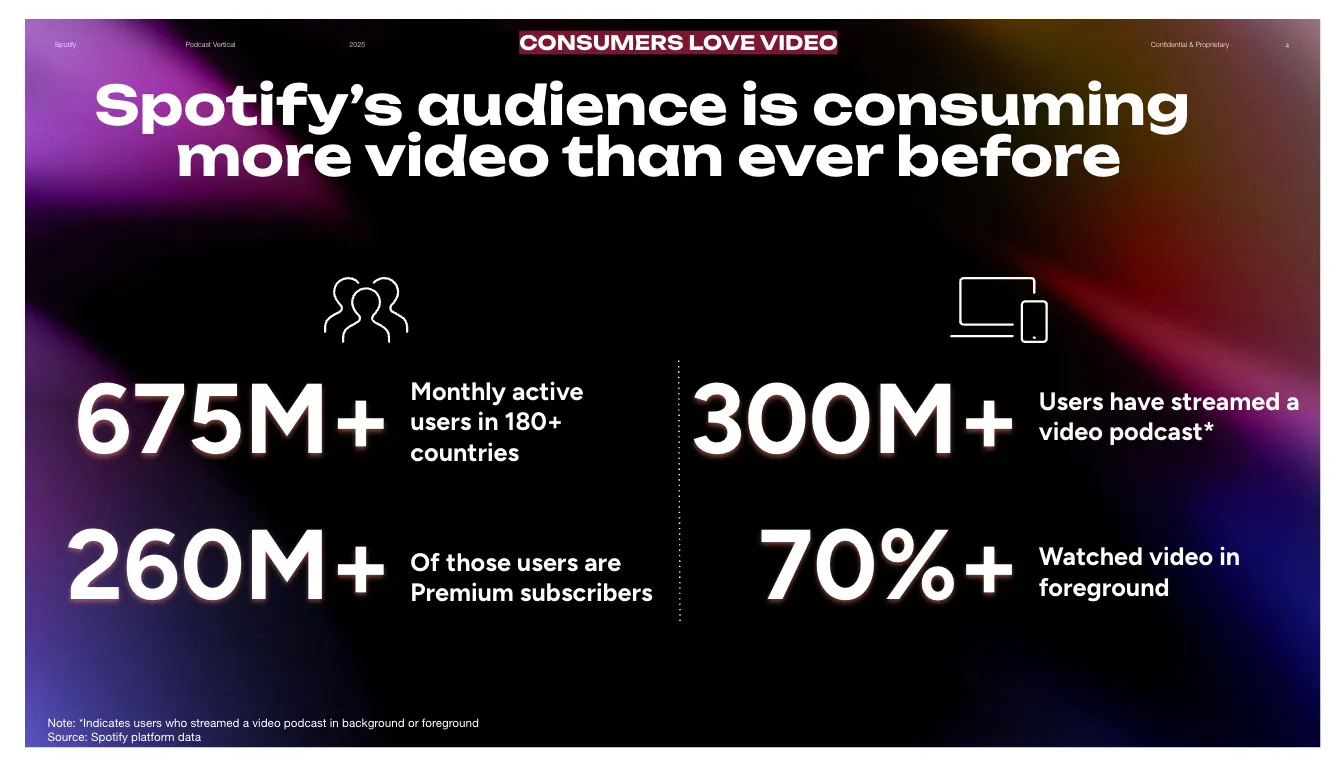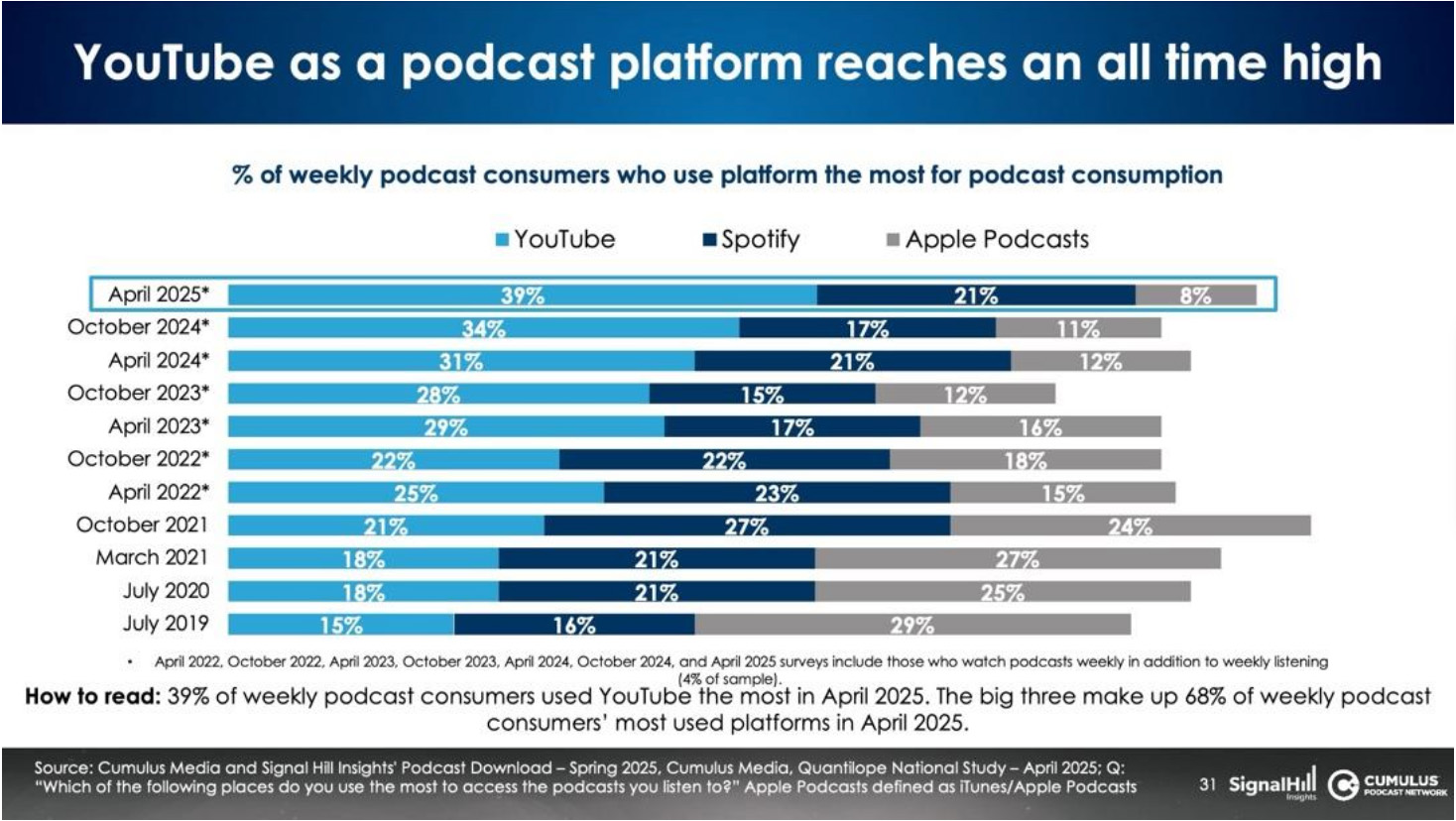Spotify Is Rewriting Podcast Economics Making Baked-In Ads More Valuable


Podcasting is on a tear. According to Westwood One, 78% of brands now buy podcast ads, and of those who don’t, 74% plan to in the next six months — the highest buy-side intent in over a decade. But while ad dollars flood the space, Spotify is quietly pushing podcasting into a post-advertising future. And that shift is making baked-in ads and cross-platform monetization more valuable than ever.

Spotify's Ad-Free Model
In January, Spotify launched its Partner Program, which skips dynamic ad insertion entirely. Instead, it pays creators directly for video views, funded by a mix of premium subscriptions and internal ad sales. The platform even offered $5,000 upfront incentives to creators in exchange for regular uploads — but notably, their Cannes pitch made no mention of “podcasts” at all [source].
In essence, Spotify is no longer playing the podcast game — it’s rebuilding the format in its own image: visual-first, subscription-funded, and measured entirely within Spotify’s walled garden.
The End of Dynamic Ads?
The implications are significant. By disabling dynamic ad delivery for Premium users, Spotify effectively cuts off podcast networks from their core revenue stream. Networks rely on dynamic ad insertion to monetize long tails of catalog content. Without it, they’re sidelined.
As one exec put it:
“It’s fundamentally at odds with our goals, which are to drive audiences and monetise content via ad-supported means. And Spotify’s KPI is premium subscribers.” [source]
Why Baked-In Ads Just Got More Valuable
Spotify’s pivot away from dynamic ads unintentionally boosts the value of baked-in advertising — the kind that’s integrated directly into the audio. Why?
-
Baked-in ads travel. They aren’t platform-dependent, so they reach audiences wherever the podcast is consumed — YouTube, Apple, RSS feeds.
-
They aren’t stripped out by Spotify’s Partner Program, giving creators more control and networks a way to preserve monetization outside the Spotify funnel.
-
They’re trusted. According to Westwood One, podcasts now have higher trust levels among advertisers than TV, radio, or social media.
This shift may also lead to more host-read sponsorships, product placements, or creative integrations that work regardless of platform — and that can still deliver ROI even if Spotify won’t serve the ad.

Interesting Stats to Watch
-
$100M+ paid out by Spotify to Partner Program creators in Q1 alone
-
70%+ adoption rate among eligible shows, with a 25% boost in listening hours
-
45% growth in weekly podcast consumption at YMH Studios (Tom Segura and Christina Pazsitzky’s network)
-
Smaller shows making $500–$1,000/month from Spotify’s direct payouts
-
Average campaign spend across podcast ads remains $42,000, suggesting the medium is still underutilized by big brands [source]
Conclusion: A Splintering Ecosystem
Spotify isn’t trying to win the podcast war — it’s trying to render the old format irrelevant. For advertisers, this fragmentation means they must be more selective about partnerships and placements. For creators and networks, it’s a wake-up call to diversify income streams and lean into formats that can survive platform-specific shifts.
In this environment, baked-in ads are no longer just a fallback — they’re a strategic asset.
👇 Looking to Find the Right Shows for Baked-In Ads?
Parla helps brands instantly discover and evaluate podcasts based on reach, audience demographics, topics, and cross-platform presence. But it doesn’t stop there.
With Parla’s Deep Research Assistant, you can:
-
Instantly generate curated media lists based on any theme or audience
-
Auto-draft personalized pitch emails to podcast hosts
-
Generate script-ready baked-in ad reads tailored to each show
Whether you're launching a host-read campaign or exploring niche placements, Parla gives you everything you need — from research to outreach — in one place.
👉 Explore Parla.fm and start building your podcast media plan today.